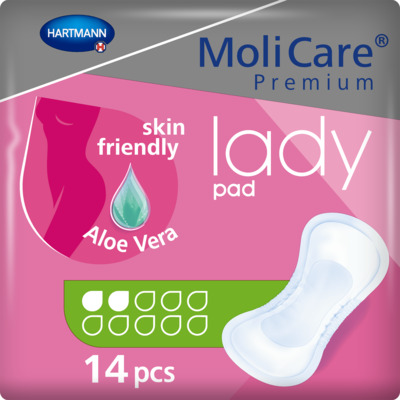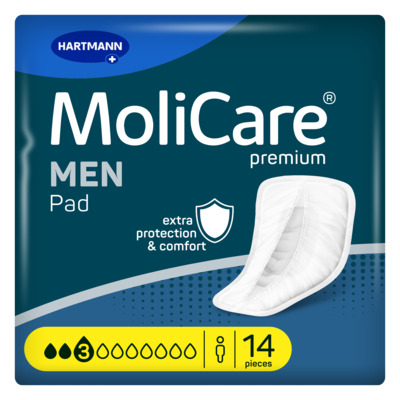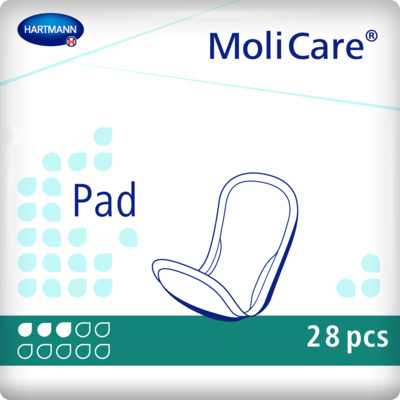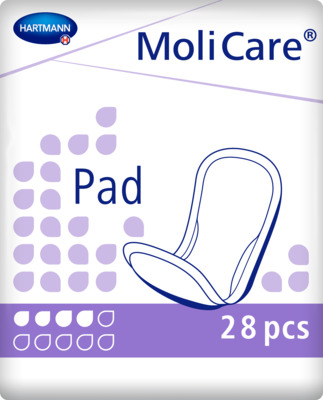Active living
Boosting mental health: The best exercises for men over 50
Entering your 50s doesn’t mean you have to slow down with exercise. Discover exercises for men over 50 that can revitalise both body and mind… As men age, maintaining strength and vitality is essential. But is it possible to continue exercising without causing long-term damage? In this article, we will explore essential exercises for men over 50, from weight training to cardio, providing actionable tips on how to get started, how to overcome common barriers and integrate these activities into everyday life. We will also discuss adopting a routine that aligns with changing physical capabilities.

Key points
- Understand the best weight training exercises adapted for those over 50, including squats and pull ups.
Explore practical cardio options and their benefits for long-term health.
Learn strategies to overcome common exercise risks.
Discover how to seamlessly incorporate fitness into your daily routine.
Exercises for men over 50
Beginning exercises for those over 50
No matter whether you used to do weight training when you were younger (and may be rusty in some areas) or are looking for a new body that involves a few dumbbells, weight training over 50 can be highly rewarding and improve your quality of life if done properly, including a natural boost in testosterone.
The key is to exercise regularly (e.g., 3-4 times a week) and to focus on maintaining muscle tone and strength to support daily activities and overall health. It is important not to strive for the extreme results often glorified in youth-focused fitness media.
Switching to dumbbell-based exercises can be particularly beneficial as these allow for a greater range of motion compared to barbells, which is crucial as flexibility may decrease with age.
Exercises like bicep curls, tricep extensions, and shoulder presses with dumbbells are gentle yet effective for improving muscle and joint mobility.

Six beginner exercises for men over 50
Here are our personal recommendations that will provide the greatest health benefits for your body. Please note that these exercises are great for beginners who may be stepping into the gym for the first time and are unsure of where to start:1. Squats
Squats are great for maintaining lower body strength and stability.
For those starting out with weight training or those who find barbell squats too demanding, alternatives like box squats or goblet squats with a kettlebell provide a manageable yet effective workout.
The key is to ensure your posture is correct—knees in line with toes and thighs parallel to the floor—to maximise the benefits and minimise the risk of injury.

2. Pull-ups
An excellent upper body exercise, pull-ups help preserve the range of motion in your shoulders and strengthen the back and arm muscles.
If full pull-ups are not possible initially, start with assisted variations using a machine or negative pull-ups where you slowly lower yourself to build strength gradually.

3. Push-ups
Pushups engage your chest, shoulders, and core, making them a fantastic all-around exercise for building upper body strength.
If standard push ups are too challenging, begin with your hands elevated on a bench or step.
As you progress, you can increase the difficulty by elevating your feet or narrowing your hand placement.

4. Lunges
To improve lower body strength and balance, lunges are beneficial.
They can be performed with dumbbells by your sides or a kettlebell for added resistance.
Ensure each lunge step is controlled and deep, with the back knee gently touching or coming close to the floor.

5. Overhead press
This is an upper-body exercise that involves pushing a weight directly upwards from the shoulders until the arms are extended overhead. It helps to maintain the ability to perform overhead activities comfortably.
Using dumbbells or kettlebells for the overhead press allows for a natural movement pattern, reducing the risk of shoulder strain.
Focus on a full range of motion without shrugging the shoulders to lock out the weight overhead.

6. Kegels
Performing Kegel exercises at home, at work, or in the gym will strengthen the pelvic floor muscles, which naturally weaken as you age, and can lead to bladder leakages. These are for both men and women.
Cardio workouts
Keeping your cardio workouts engaging will also assist in making exercising a regular routine. Try mixing up your routine with enjoyable activities like neighbourhood walks, hikes, or even a bit of gardening work like raking or mowing. If you enjoy cycling, alternate between stationary and outdoor rides, or incorporate swimming and other water exercises for low-impact, high-efficiency cardio workouts.
If you struggle with bladder control, learn how incontinence when exercising is still possible when managed effectively.

How much exercise should men over 50 do?
Current health guidelines emphasise the importance of regular physical activity for all age groups, but especially for those over 50.
The World Health Organization recommends that adults engage in at least 150 minutes of moderate-intensity physical activity per week. This can be broken down into 30-minute sessions over five days. This target is designed to be flexible, allowing for adjustments based on individual fitness levels and lifestyle needs.
Getting started with exercise
Increasing your physical activity can significantly strengthen your physical and mental well-being.
When planning your fitness routine, consider your preferences: Do you enjoy the fresh air of outdoor activities, or do you prefer the privacy of indoor exercise?
For those interested in improving cardiovascular health, brisk walking or cycling might be more effective.
If strengthening and flexibility are your goals, yoga or Pilates could be ideal, performed either at home or in a studio.
Whether it's solo or group activities, traditional sports, or something as simple as gardening, the key is to engage in movements that you enjoy, so it will be more likely to maintain your interest long-term.
Addressing common barriers
It's common to face obstacles when starting a new fitness plan.
External factors such as the weather, the cost and time constraints, alongside internal concerns like fear of injury or self-consciousness about body image, can all act as deterrents and can easily lead to opting out of exercising altogether.
Creating a positive environment, free from judgement and pressure, can significantly aid the exercise experience. Opt for environments that make you feel comfortable and supported, be it a community centre, a quiet corner of a public park, or your living room.
Addressing these concerns head-on, whether through finding cost-effective fitness solutions, scheduling exercises during better weather conditions, or choosing private or semi-private workout spaces, can help maintain a consistent routine.

Social support and lifestyle
Engaging a friend or family member in your workout routine can not only provide motivation but also help alleviate any anxiety about how you might look while exercising.
Shared experiences can foster a sense of camaraderie, making your fitness journey more enjoyable and sustainable.
Lifestyle planning
To integrate exercise seamlessly into a healthy lifestyle for over 50s, it’s crucial to look realistically at your daily schedule. Identify potential time slots that could be dedicated to physical activity, and consider ways to incorporate movement naturally into your day, such as opting for stairs over elevators or parking further away from destinations to increase walking distance.
At home, integrate exercises into routines like watching TV or cooking – try doing calf raises while standing at the hob or some quick weighted exercises during commercial breaks.
At work, especially for those with sedentary jobs, try to move around every hour, use lunch breaks for quick walks, or organise a group activity with colleagues.
Engaging in outdoor activities can improve our mental well-being more effectively than indoor exercises. Whether it's a hike, a game of football with your children, or a simple jog through a park, being active outdoors can boost both your physical and mental health.

Preventing injury and common mistakes
As you age, the likelihood of injuries increases, regardless of previous activity levels. It is essential to consult with your healthcare professional before initiating any new workout programmes.
When exercising, pay particular attention to the following signs that could indicate potential health issues and the need for medical attention:
Dizziness or feeling faint
Wheezing or shortness of breath
Chest pain or pressure
Blurred vision
Headache
Extreme sweating
Sudden weakness or numbness
Joint pain or swelling
Regular breaks
Physical activity can lead to a rapid loss of endurance, especially as you get older. If you take a break from exercise for more than a couple of weeks, it's crucial to resume your routine gradually. Jumping straight back to the intensity level you were accustomed to can be challenging and potentially harmful.
It’s equally important to allow your body time to rest and recover, particularly after intense workouts. If you feel fatigued or if other commitments disrupt your exercise schedule, taking a short break can help you return to activities without risk of injury.
Avoiding common training mistakes after 50
No matter whether you are a newcomer or experienced towards exercising, it is important to be aware of common mistakes that many realise too late:
Training intensity and volume: Despite common misconceptions, don’t fall into the trap of significantly lowering your training intensity due to age. Maintaining a balanced exercise routine with sensible weight lifting can help increase longevity and improve overall health. Avoid the extremes of maxing out too frequently, which can prolong recovery times and increase injury risk. Instead, focus on consistent, moderate-intensity sessions to keep muscle mass and ensure regular activity.
Overtraining: Avoid focusing too intensely on single body parts with high volume workouts. Such practices can lead to overuse injuries and longer recovery periods. Opt for full-body workouts that evenly distribute strain and benefit, ensuring quicker recovery and sustained fitness.
In conclusion, maintaining an active lifestyle over 50 is crucial for both physical and mental health. By starting with simple, manageable exercises and incorporating a variety of enjoyable activities into daily routines, men over 50 can significantly improve their well-being. Regular strength training, adapting workouts to individual needs, and avoiding common workout mistakes can ensure long-lasting health benefits, while making the path to a healthier life more enjoyable.
FAQs
What are the best types of exercises for men over 50?
A variety of different exercises are beneficial to maintain overall fitness. Exercises, such as walking, cycling, swimming and low-impact aerobics are great for cardiovascular health. Strength training can be done with free weights, machines or resistance bands. Yoga and stretching are excellent for flexibility and balance.
What are the benefits of exercising for men over 50?
Regular exercise helps reduce the risk of chronic diseases such as heart disease, diabetes, and certain cancers. It improves muscular strength, flexibility, balance, and coordination. Exercise also benefits mental health by reducing stress, anxiety, and depression.
What kind of diet should complement the exercise routine for men over 50?
A balanced diet rich in fruits, vegetables, whole grains, lean proteins, low-saturated fats and sugars is essential. Adequate hydration is crucial, especially just after a workout. Consulting a nutritionist can provide personalised dietary advice.
What are box squats and goblet squats?
Box squats are a variation of traditional squats where you squat down to a box or bench, lightly touch it with your buttocks, then rise back up. This exercise targets the posterior chain muscles like the hamstrings and glutes more than regular squats. Goblet squats involve holding a weight, typically a kettlebell or dumbbell, close to your chest with both hands as you perform a squat. This helps improve squat form and focuses on the quads, glutes, and core.
What are kettlebells?
Kettlebells are cast iron or steel balls with a handle attached to the top. They are used for a variety of strength training, flexibility, and cardiovascular exercises. Kettlebells provide a unique weight distribution, allowing for momentum and swinging movements, which can engage multiple muscle groups simultaneously.
Holland, M., (2024) The Effects Of Weightlifting On Testosterone Levels: What You Need To Know. Medshun. [online] Available at: https://medshun.com/article/does-lifting-weights-boost-testosterone-levels [accessed 02/10/2024]
RHS. (2020) Why gardening makes us feel better – and how to make the most of it. [online] Available at: https://www.rhs.org.uk/advice/health-and-wellbeing/articles/why-gardening-makes-us-feel-better [accessed 02/10/2024]
Holland & Barrett. (2021) 13 of the best cardio exercises. [online] Available at: https://www.hollandandbarrett.com/the-health-hub/weight-management/fitness/exercise/best-cardio-exercises/ [accessed 02/10/2024]

MoliCare® Premium Lady Pad 2 Drops
<h2>Skin Friendly Pant Liners</h2> <p>For women that experience slight incontinence and bladder weakness, across different age groups, it can be a challenge to find the right bladder weakness product that is easy to apply and wear without the worry of potential leakages. Fortunately, we understand this approach, hence why we are happy to offer our MoliCare® Premium Lady Pad 2 drops, that is skin-friendly, Aloe Vera applied, and comes with 14 liners per bag.</p> <h2>Slim and discreet liners</h2> <p>Whether dealing with stress incontinence or urge incontinence, these panty liners offer a discreet and easy solution on the go. Simply place the pad in your underwear and secure it with the adhesive strip for all-round protection. Available in different absorbency levels, MoliCare® bladder weakness products cater to all levels of bladder weakness, ensuring secure care.</p> <h2>Control Bladder Weakness</h2> <p>Enjoy the benefits of these body-shaped absorbent panty liners, designed for women with bladder weakness. The pads offer discreet, reliable protection with features including odour control and fast absorption.</p> <p>With a wide adhesive strip, you can comfortably fix the pad in your regular underwear, providing secure and comfortable fixation. The pads are skin-friendly, featuring soft, breathable materials, including foam cuffs, and a top sheet treated with Aloe Vera.</p> <p>Keeping your skin healthy is a priority, which is why MoliCare® Premium Lady Pads have a skin-neutral pH value of 5.5 and an antibacterial finish. They are also dermatologically tested, offering peace of mind.</p> <h2>Buy pant liners online</h2> <p>Never worry about running out with our convenient order service and fast delivery direct to your door. Enjoy free shipping on orders over £50.</p> <p>If you need assistance, our professional customer service team is here to support you in choosing the right product. Reach out to us today at 0800 028 9470 and experience the comfort and reliability of MoliCare® Premium Lady Pads.</p>
MoliCare® Premium Men Pad 3 Drops (ISO 441ml)
<p><strong>Reliable and discreet incontinence pads for men with an instant-dry feeling</strong></p> <p>Bladder weakness is difficult to live with, the last thing you want to worry about is incontinence protection. That’s why our best-ever MoliCare® premium MEN Pad 3 drops offer an <strong>all-round protection</strong> that keeps everything dry and comfortably in place while fitting discreetly in your regular underwear.</p> <p>The incontinence pad for men quickly <strong>removes urine from the surface up to 86 %* faster than before</strong> and neutralises unpleasant odours to leave you feeling instantly dry and in control thanks to the new <strong>MoliCare SkinGuard</strong>®<strong> Absorbent Core Technology</strong>. This skin-friendly technology not only helps you feel up to 90 %* drier than previous MoliCare® premium<strong> </strong>MEN pads, it also helps to maintain healthy skin and preventing irritation.</p> <p><strong>Engineered for the male anatomy</strong> and dermatologically tested for maximum skin compatibility, these male urinary pads do not contain colour, perfume or latex making them environmentally friendly too.</p> <p>*Compared to last generation</p>
MoliCare® Pad 3 Drops
<h2>Incontinence pads for men and women</h2> <p>Protect yourself against slight bladder weakness with the MoliCare® Pad 3 drops. Suitable for men and women, offering an ideal solution to regain control and live your active life without interruptions. Slimline, discreet, and contoured to fit your body, these incontinence pads ensure a comfortable and barely noticeable feel, providing exceptional dryness and protection for slight incontinence.</p> <p>Crafted with soft, skin-friendly fabric and a polyester backsheet, these incontinence pads ensure you can confidently go about your day, secure against minor leaks. The wide adhesive fixing strip keeps the pad securely in place, while the super absorbent core wicks moisture away from your skin. The elastic anti-leak edging adds an extra layer of reassurance, and odour neutraliser keeps you feeling fresh and confident. With the MoliCare® Pad 3 drops, you no longer need to let slight or occasional incontinence hold you back from enjoying life to the fullest. Simply adhere the pad to your underwear, and you will barely feel the difference.</p> <h2>Price match promise</h2> <p>Experience convenience with our fast delivery service, bringing your chosen products directly to your door. At HARTMANN Direct, we offer a price match promise and free delivery for orders over £50, making sure you receive both quality and value.</p> <p>If you need further assistance, our customer care team is here to help. Give us a call today at 0800 028 9470, and we'll find the perfect incontinence product tailored to your needs. Take charge of your life with the reliable and comfortable protection of MoliCare® Pad 3 drops. Say goodbye to worries and hello to an active and confident lifestyle.</p>
